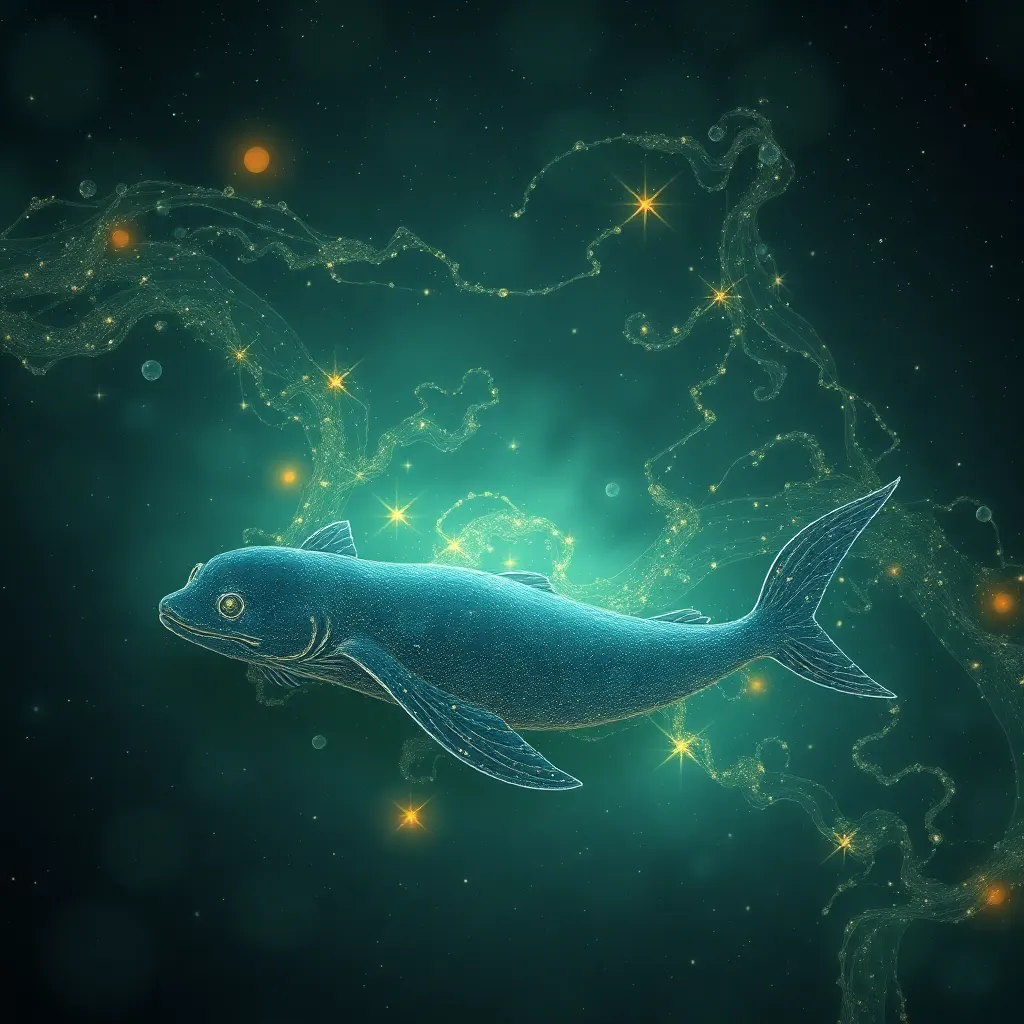The Enchanted Skin: Selkie Magic and Transformation in Irish Mythology
I. Introduction to Selkie Mythology
Selkie mythology is a captivating aspect of Celtic folklore, particularly prominent in Irish and Scottish traditions. Selkies are mythical creatures that can transform from seals into humans by shedding their skins. This unique ability to change forms has given rise to a plethora of stories that explore themes of identity, love, and loss.
The origins of Selkie folklore can be traced back to ancient sea-faring communities, where seals were often viewed as mystical beings. These stories encapsulate the relationship between humans and the natural world, emphasizing the fluidity of identity and belonging. In Irish mythology, Selkies are often depicted as beautiful, enchanting beings, embodying both the grace of the sea and the complexities of human emotions.
Selkies possess distinctive characteristics that set them apart from other mythological creatures. They are typically described as having the ability to transform at will, often linked to their enchanting seal skins. Their dual nature—part human and part seal—symbolizes the tension between freedom and captivity, making them significant figures in Irish mythology.
II. The Legend of the Selkies
The legends of Selkies often center around themes of love and longing. Common narratives depict a fisherman who discovers a Selkie woman on the shore, who has shed her seal skin to bask in the sun. The fisherman may steal her skin, binding her to him and forcing her to live as his wife. This act of theft reveals the darker side of human desire, as it often leads to heartache and loss.
The enchanted skin is central to Selkie transformation, serving not only as a physical barrier but also as a symbol of freedom. When a Selkie loses her skin, she is trapped in a human form, unable to return to the ocean. This reflects the broader theme of identity—how much of ourselves is tied to our origins and connections to nature?
When compared to other mythological beings, Selkies share similarities with mermaids and other shape-shifting entities. However, Selkies are unique in their representation of longing for both human companionship and the freedom of the sea. They embody the duality of existence, existing between two worlds yet belonging fully to neither.
III. The Symbolism of the Selkie Skin
The Selkie skin is a powerful symbol within these narratives. It represents identity and freedom, as the ability to shed one’s skin is synonymous with the ability to choose one’s path. When Selkies are forced to live in human form, they experience a loss of identity and a yearning for their true selves.
- Identity: The skin is a literal and metaphorical representation of who a Selkie is, reflecting the struggle many face in reconciling their identities with societal expectations.
- Freedom: The act of shedding the skin symbolizes liberation, while the loss of it represents captivity and constraint.
- Longing: The enchanted skin serves as a metaphor for the deep emotional yearning for a place or state of being that is often lost to time or circumstance.
IV. Selkie Transformation and Its Consequences
The transformation process from seal to human is a poignant moment in Selkie stories. It often occurs under specific conditions, such as during a full moon or at the break of dawn when the sea is at its most magical. This transformation is not merely physical; it encapsulates deep emotional and psychological changes.
For Selkies, the implications of transformation are profound. While they gain human experiences and connection, they also face the pain of separation from their true home in the sea. For humans, the consequences can be equally significant, as the allure of a Selkie often leads to complicated relationships filled with longing and regret.
Emotionally, Selkie tales highlight the complexity of love and possession. The enchantment of a Selkie can lead to blissful moments, but the underlying theme is often one of sadness and longing for what is lost. Socially, these stories reflect the struggles of relationships where one partner feels constrained or unfulfilled.
V. Selkies in Irish Culture and Literature
Selkies have left an indelible mark on Irish culture, frequently appearing in traditional songs and tales. These stories are often passed down through generations, resonating with audiences due to their universal themes of love and loss. The haunting melodies of Irish folk songs often tell tales of Selkies, capturing their ethereal beauty and tragic destinies.
In modern literature and film, Selkie stories continue to be adapted and reimagined. Authors and filmmakers draw inspiration from these ancient narratives, exploring the complexities of transformation and identity in contemporary contexts. These adaptations often highlight the enduring nature of Selkie mythology and its relevance to modern audiences.
The impact of Selkie mythology is significant in shaping Irish cultural identity. It reflects the deep connection between the Irish people and the sea, as well as the values of resilience and the search for belonging.
VI. The Feminine Archetype in Selkie Tales
Selkie narratives often explore gender roles, portraying the Selkie as a complex feminine archetype. On one hand, Selkies embody strength and independence; on the other hand, they also represent vulnerability and the pain of separation. This duality invites a deeper examination of feminine identity within these tales.
The Selkie as a representation of feminine strength is evident in her ability to navigate both the human and animal worlds. However, her vulnerability is highlighted by the consequences of her transformation, often resulting in loss and heartache. Feminist interpretations of Selkie stories emphasize the struggle for autonomy and the reclamation of identity in a patriarchal context.
VII. Regional Variations of Selkie Myths
While Selkie tales are most commonly associated with Ireland and Scotland, variations exist across the Celtic regions. In Ireland, Selkie legends often emphasize themes of sorrow and longing, while Scottish tales may focus more on the playful aspects of Selkie life.
The influence of local culture on these legends is significant. For instance, the harsh coastal environments of Scotland may lead to more tales of survival and resilience, while the softer landscapes of Ireland might inspire more romantic interpretations. A comparative analysis of Selkie myths reveals how regional nuances shape the narratives, reflecting the unique cultural contexts in which they arise.
VIII. Conclusion: The Enduring Legacy of Selkie Magic
The timeless appeal of Selkie stories lies in their exploration of transformation, identity, and the human experience. These narratives resonate with audiences, reminding us of the delicate balance between freedom and captivity.
In contemporary society, Selkie mythology continues to be relevant, offering insights into our struggles with identity and belonging. As we navigate our own transformations in an ever-changing world, the legacy of Selkie magic endures, inviting us to reflect on the power of folklore in shaping our understanding of ourselves and our connections to the natural world.
Ultimately, Selkie tales serve as a reminder of the beauty and complexity of life, urging us to embrace the magic and transformation that lies within us all.



